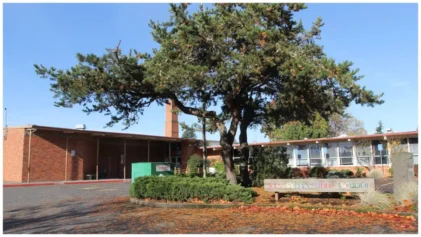
FILE – In this Nov. 25, 2013 file photo, Chief U.S. District Judge Ruben Castillo speaks from the bench in Chicago. A question raised nationwide about whether federal agents display racial bias by staging phony stash-house stings overwhelmingly in black neighborhoods is the focus of landmark hearings in Chicago.A rare panel of federal trial judges including Castillo begins two days of hearings Thursday Dec. 14, 2017, on the stings. (AP Photo/M. Spencer Green File)
CHICAGO (AP) — The question of whether federal agents display racial bias by staging phony drug stash-house stings overwhelmingly in black neighborhoods is the focus of hearings beginning Thursday in Chicago and could determine whether agencies curtail or even abandon their use nationwide.
A first-of-its-kind panel of federal trial judges holds two days of hearings on the stings, which are overseen by the U.S. Bureau of Alcohol, Tobacco, Firearms and Explosives and typically involve agents posing as cartel couriers who talk suspects into agreeing to rob drugs that don’t exist from what they are told are guarded stash houses that are also fictitious.
The nine panelists — each of whom presides over 12 separate stash-house cases with 43 defendants in all — chose to hear evidence simultaneously on the question after defense teams in the dozen cases all moved for the indictments to be tossed on grounds of racial bias.
How the judges rule in coming weeks — and they could submit a single ruling — is expected to influence how courts around the country deal with similar claims about the stings, which have been a favorite tool of federal law enforcement dating back to the 1990s. Rulings in Chicago could also encourage the U.S. Supreme Court to take up the issue.
Among the panelists is Ruben Castillo, whose ruling in 2013 that there’s a “strong showing of potential bias” in the stings generated years of legal motions and dueling expert reports — culminating in this week’s hearings. He ruled just weeks after he was sworn in as the federal court’s first Hispanic chief judge.
Stash-house stings have been criticized on other grounds, including in how agents dangle the prospect of pocketing tens of thousands of dollars to often poor, desperate subjects. Some courts have warned the stings risk crossing the line into illegally entrapping suspects.
Authorities insist they’re careful not to entrap anyone, targeting only those with records of violent crimes and who say unequivocally they want in on armed robberies.
The answer to the question of whether the stings discriminate by race hinges largely on competing interpretations of statistics.
Defense lawyers say the fact that around 80 percent of stings are conducted in predominantly African-American neighborhoods speaks for itself.
Their main witness is Jeffrey Fagan, a professor at Columbia Law School. In his report for defense lawyers, he notes that out of 94 stash-house defendants in the Chicago area between 2006 and 2013, 74 were black, 12 were Hispanic and just eight were white. That and other data, he writes, proves a “pattern of discrimination.”
But government lawyers say it’s only natural that trafficking-related stings are focused where trafficking activity is highest — in low-income areas on Chicago’s South and West Sides. Fagan’s report, they contend in one filing, “is riddled with false assumptions … designed to manufacture a racial disparity where none exists.”
Their expert is Max Schanzenbach, a professor at the Northwestern University School of Law. After scrutinizing the same data, he faulted Fagan’s methodology.
“A straightforward comparison of the stash house defendants to reasonable comparison groups — those arrested for similar crimes, in particular a home invasion involving a firearm — finds no statistical evidence of discrimination,” he concludes.
Some judges have gone on the record criticizing agents’ power to arbitrarily increase the severity of charges and potential sentences simply by increasing the amount of drugs they tell targets are in the non-existent stash houses. And suspects can be charged not only with trying to steal but with trying to distribute the phantom drugs, charges that carry stiff mandatory prison terms.
“The time has come to remind the Executive Branch that the Constitution charges it with law enforcement — not crime creation,” a U.S. judge in central California, Otis Wright, wrote in a scathing 2014 ruling. “The Constitution will not tolerate subjecting an individual to prosecution for an imaginary crime subject to a very real punishment.”
___


